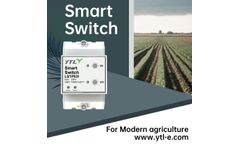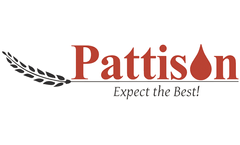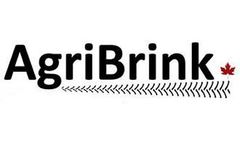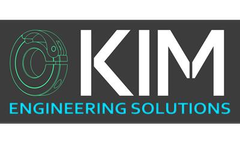Precision Fertiliser Articles & Analysis: Older
12 articles found
The Smart Electricity Meter plays a significant role in assisting smart agriculture by providing real-time monitoring and analysis of farm electricity usage, precise agricultural management, automation and mechanical assistance, artificial intelligence and data analysis, and sustainable and environmental development. 1. Real-time Data Monitoring and AnalysisThe Smart Electricity Meter can monitor ...
Introduction: Modern agriculture is increasingly reliant on technology to improve efficiency, sustainability, and productivity. One key technological innovation that is revolutionizing the way farmers manage their land is soil sensor technology. Soil sensors provide real-time data on crucial soil parameters, enabling farmers to make informed decisions about irrigation, fertilization, and overall ...
ByJXCT
For millennia, farmers have tilled the land, guided by intuition and tradition. But beneath the surface, in the hidden realm of the soil, lies a powerful language waiting to be deciphered. A language not of words, but of electrical whispers, dictating the very foundation of plant growth and ecosystem health. This language is spoken in terms of Electrical Conductivity (EC), and to understand it, ...
Unlocking Data-Driven Insights for Sustainable and Efficient Farming For centuries, agriculture has relied on tradition and intuition, with farmers often relying on their experience and gut feeling to make decisions about their land. However, the 21st century has ushered in a new era in agriculture, one driven by data and innovation. At the forefront of this revolution are intelligent soil ...
Optimizing Crop Yields and Resource Efficiency through Precision Agriculture In the pursuit of sustainable agriculture, precision farming has emerged as a game-changer, revolutionizing agricultural practices and fostering a more efficient and environmentally responsible approach to crop production. At the heart of precision farming lies the concept of real-time data acquisition, enabling farmers ...
Revolutionizing Agriculture with Data-Driven Insights In the dynamic landscape of agriculture, sustainability has emerged as a critical pillar, driving the pursuit of practices that minimize environmental impact while maximizing productivity. Amidst this evolving paradigm, soil sensors have emerged as a transformative force, unlocking a wealth of insights into soil health and enabling farmers to ...
Introduction Plant nutrition is a critical aspect of sustainable agriculture, as it directly impacts the growth, development, and yield of crops. Traditional methods of fertilizer application often lead to over- or under-fertilization, resulting in poor plant growth or environmental pollution. With the advent of soil NPK sensors, however, farmers now have a precise and efficient tool to improve ...
ByJXCT
Pattison Liquid Systems has been developing and supplying the liquid fertilizer application market with distribution kits for over 40 years. From our fixed orifice systems to our variable rate application systems we have the kit required for todays seeding equipment. See our options ...
Farmers have to make decisions on which soil-health technologies they want to adopt The ‘Smart Soils’ panel at the Ag 4.0.2 conference included Jordanna Kalis from SoilOptix, Taylor Vokes from Sprucedale Agromart and Jake Kraayenbrink, owner of Agbrink. The panel was moderated by Keith Reid (r), a local farmer and the Alternative Land Use Services program co-ordinator for Grey-Bruce. ...
The key advantages of drip irrigation include: Water application is extremely efficient and little water is lost to evaporation Fertiliser and nutrient application is very efficient because fluids are applied directly on the plant. This allows farmers to save money on fertiliser. Non-potable water can be safely used Drip irrigation designs can accomodate ...
Within-field variability of corn (Zea mays L.) N need calls for development of precision fertilizer application strategies. One approach many are investigating is in-season canopy reflectance sensing. Justification for this strategy partly rests with the premise it will improve N use and reduce N loss from fields. The objective of this study was to determine the potential environmental benefits ...
Spatial distribution of canopy N status is the primary information needed for precision management of N fertilizer. This study demonstrated the feasibility of a simple spectral index (SI) using the first derivative of canopy reflectance spectrum at 735 nm (dR/d|735) to assess N concentration of rice (Oryza sativa L.) plants, and then validated the applicability of a simplified imaging system ...







